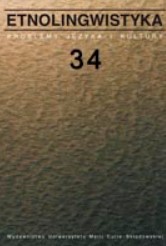Three cognitive frameworks for analyzing metaphoric plant names: Cognitive Grammar, Conceptual Metaphor Theory and Conceptual Blending Theory
Three cognitive frameworks for analyzing metaphoric plant names: Cognitive Grammar, Conceptual Metaphor Theory and Conceptual Blending Theory
Author(s): Hubert KowalewskiSubject(s): Customs / Folklore, Semantics, Cognitive linguistics
Published by: Wydawnictwo Naukowe Uniwersytetu Marii Curie-Sklodowskiej
Keywords: folk plant names; Cognitive Grammar; Conceptual Metaphor Theory; Conceptual Blending Theory; linguistic worldview;
Summary/Abstract: The aim of the article is to examine the applicability of three theoretical frameworks developed within Anglophone cognitive linguistics, Ronald Langacker’s Cognitive Grammar, George Lakoff and Mark Johnson’s Conceptual Metaphor Theory, and Gilles Fauconnier and Mark Turner’s Conceptual Blending Theory, in the study of semantic motivation behind folk plant names. Even though none of the theories has been originally developed as a tool for reconstruction what Jerzy Bartminski terms the linguistic worldview, the theories may help to capture semantic nuances behind folk names and contribute to in-depth and comprehensive descriptions of folk conceptualizations. Since the scope of applicability of the three frameworks overlaps on conceptual metaphors, the article demonstrates the analysis of the metaphoric name gesi pepek (lit. ‘goose navel’; daisy, Bellis perennis) and discusses strengths and weaknesses of the three frameworks in the task of reconstructing conventional folk imagery encoded in the name.
Journal: Etnolingwistyka. Problemy Języka I Kultury
- Issue Year: 34/2022
- Issue No: 34
- Page Range: 79-94
- Page Count: 16
- Language: English

